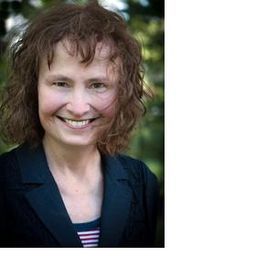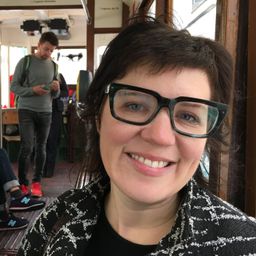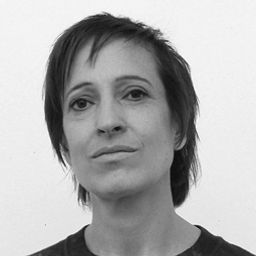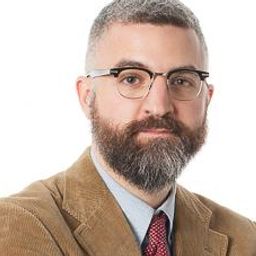What does Photography Preserve? Reification and Ruin in the Photographic Heritage of a Place Called Montreal
Mon statut pour la session
Photography was recognized as an instrument of heritage preservation from the moment of its inception in the early nineteenth century, when projects such as Les Excursions Daguerriennes (1841-1843), a set of Romantic engravings of monuments based on photographic documents, established the links between sight and science, memory and history, hortatory reification and ‘ruin lust’ (Brian Dillon, 2014). This session was conceived in the certain knowledge that almost every speaker at the conference would use photographic technology as a window onto the past, present, and even the future, with very little comment on the lens itself. “What Does Photography Preserve?" intends a reflexive approach to the relationship between photography and heritage practices, as manifest in architectural history and theory, urbanist, environmental, and photographic studies, and as practiced by documentary photographers and conceptual artists – actors from cognate disciplines unified by their interest in the built environment and its created communities, but divergent in their emphases and confidence in the various forms of photographic representation. Our focus on Montreal strengthens the dialogical structure of the chapters and allows for more sustained critical analysis of objectives and outcomes in the uses of photography.
The papers collected here touch on diverse people, neighbourhoods, or epochs, but all are Montreal stories. As the speakers engage with photographic traces, aspects of the city’s past come in and out of focus, becoming intelligible and available for contemporary viewers. These case studies thus reflect on Montreal’s unique history – as the erstwhile economic and industrial hub of Canada, as the prime venue for encounters between Anglophones and Francophones, as the site of intermittent modernist epiphanies, and so on. Montreal becomes a compelling object of study on its own terms, while also taking shape in relation to an interdisciplinary field of urban scholarship that has flourished in recent years. Cities are not regarded as mere containers for cultural activity; instead, a line of thinkers encompassing Walter Benjamin, Henri Lefebvre, and Jane Jacobs (amongst others) has approached the dynamism of cities in complex theoretical terms. What is at stake is how people profoundly inhabit the spaces of a city, and how cultural memory become embedded in its built environment. The material heft of architecture and streetscapes remains important for any analysis of urban space, alongside political and economic imperatives, but speakers in this session also emphasize the everyday vitality of urban environments, so that at any given moment the identity of a city is also forged through a wealth of social encounters and ephemeral gestures.
Sous sessions
Le frère Marie-Victorin (1885-1944) est une figure emblématique du développement des sciences au Québec dans la première moitié du vingtième siècle. De son vrai nom Conrad Kirouac, Marie-Victorin aura su contribuer au développement scientifique du Québec notamment par ses travaux de recherche dans le domaine de la botanique qui mèneront au monumental ouvrage intitulé « La flore laurentienne », publié en 1935, qui demeure encore à ce jour une référence incontournable. Mais le legs...
Les premiers groupes organisés d’explorateurs urbains apparaissent à la fin des années 1970, avec les Cave Clans. Internet sera rapidement pour eux un facteur de cohésion, en plus de rendre les résultats de leur pratique, généralement clandestine, relativement visibles. On définit habituellement l’exploration urbaine (urban exploration – urbex) comme une activité d’infiltration dans des sites et des réseaux ignorés ou interdits, ou dans des espaces en déréliction, ruines postindustrielles ...
In 2010, pouf ! art + architecture began a site-specific artwork under the rubric of Urban Occupations Urbaines (UOU), a year-long, curatorial platform located in the rapidly gentrifying, post-industrial neighbourhood of Griffintown, Montreal. Created by curator Shauna Janssen, UOU invited thirty artists to reflect on and engage with the spatial, historical, and cultural traces of Canada’s first working-class slum. The site of pouf !’s project was a popular dog run called Parc Gallery. De...
From 1966 to 1985, Edith Mather, an amateur Montreal-based photographer, walked the city’s downtown neighbourhoods with a seemingly singular purpose—to document the evolving streetscape. Embedded in her domestic routine, she began her walks each morning by packing a pram with her son, camera, and supplies, and returned home each evening to meticulously record the visited places. The resulting collection of over 4000 images reveals the city through candid, black and white photographs that M...
This presentation will include images from the Milton Park series (1970-1973) by David Miller and myself, and excerpts from my recent work (2008-2015). Their comparison will underscore artistic priorities and the subject of time as central to notions of photographic recording. To preserve my neighbourhood was the sole objective that generated my first photography project. In 1970 the nineteenth-century Victorian row houses at the core of Milton Park, along Park Avenue and Prince A...
The Archives de la Ville de Montréal house a series of 1002 black and white film negatives that document the old Red Light neighbourhood at the heart of Faubourg Saint-Laurent. The photographs, taken in 1957 by Jean-Paul Gill, a photographer working for the city, were commissioned before this run-down part of town was razed to pave the way for a utopian government-run housing project. The documentation of urban decay figures among the very early subject matter of photography. Charles Marvi...
In the late 1960s, the North American field of photographic studies began to develop across a range of practices and institutions. By the early 1980s, much of its cultural infrastructure—artist-run centres, art colleges and university departments, and art gallery collections—had been roughed into place, although many of Canada’s leading museums were resistant. The medium’s existential question remained unresolved: should photography be considered a document or a work of art? Indexicality a...
The historian Dorothy Williams has characterized Montreal’s Black history, and present, as the story “of a people whose history has been ignored, deliberately omitted, or distorted.” This paper will look at the NCC/Charles H. Este Cultural Centre as a lieu de mémoire, or memory space: a space where people can engage in the active and collective process of making memory and meaning from a shared past in the present. The NCC/Charles H. Este Cultural Centre was located in Little Burgundy, the...
“Private clubs and mansions...could [be] interpreted in terms of the masons’ and carpenters’ skills in constructing them, and the maids’ and gardeners’ skills in maintaining them, to supply...urban working-class urban history.” —Dolores Hayden In 1974, photographer Charles Campbell Gurd (b. 1950) visited fifteen homes in the Golden Square Mile district of Montreal, taking pictures of “the houses, the grounds, details of doors and windows...rooms, groupings of furniture...and in mo...
Rarely do we see a piece of monumental architecture standing in such a state of invisibility in the community to which it belongs. Such is the case with the Fort Saint Louis, a stone and mortar wall originally erected in what is now the Kahnawake Kanien’kehá:ka (Mohawk) reserve, located barely eight kilometres southeast of the Island of Montréal. The wall, once part of the defensive architecture of a stronghold of the French economy within Native North America, now lies in a state of limbo...
In the 1980s, three very large scale site-specific installations occupying the entire architectural envelope of three distinct and highly significant abandoned buildings in post-industrial Montréal were created by Martha Fleming and Lyne Lapointe. Entirely ephemeral, all that remains of the site-specificity of these projects are their photographic documents. This presentation seeks to trace some of the changes in meaning and value of these photographic documents over time, and the ways in ...
Montreal is just over a year away from celebrating the fifty-year anniversary of Expo 67, the world’s fair held in Montreal during the summer of 1967. Throughout the intervening years, this event has remained a focal point for the city’s evolving identity, even while images of Expo 67’s futuristic cityscape have continued to circulate. Since only a few striking architectural and sculptural fragments of Expo 67 have survived in material form, such photographic images play a crucial role in ...
This paper will analyze the complex history of Jean-Paul Mousseau’s "Lumière et mouvement dans la couleur," an abstract fibreglass, resin, copper and steel mural backlit by a series of aleatorily oscillating neon lights, located in the lobby of Gaston Gagnier’s Hydro-Québec corporate head office. A pioneering work of lumino-kineticism commissioned in 1962 for one of downtown Montreal’s first modernist skyscrapers by a government-owned public utility company meant to promote French Canadian...
La photographie joue un rôle central dans l’œuvre de l’artiste et architecte montréalais Melvin Charney. Penser ce rôle dans le cadre d’une session intitulée « qu’est-ce que la photographie préserve? » permet de jeter un nouvel éclairage sur les diverses utilisations de la photographie par Charney et sur la manière dont il a exploité la valeur indexicale du médium. Dès l’adolescence, Charney photographie son environnement, la ville de Montréal. Il parcourt son quartier pour fixer ...






Discussion